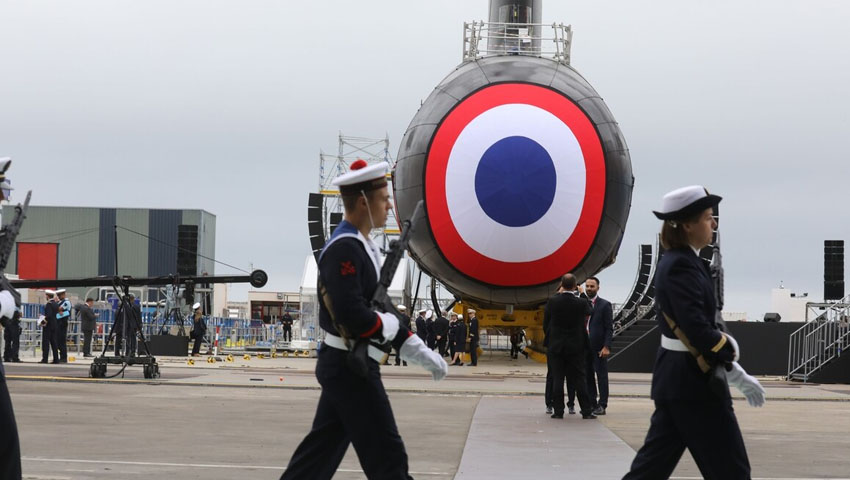Defence Minister Linda Reynolds has confirmed a renewed commitment from Naval Group and French Defence Minister Florence Parly to maximising Australian industry involvement in the Future Submarine program.
To continue reading the rest of this article, please log in.
Create free account to get unlimited news articles and more!
Following explosive claims made by Naval Group Australia CEO John Davis in an interview with Ben Packham of The Australian, the Department of Defence and Naval Group have issued a strong rebuke and sought to clear the record.
It is shaping up to be one hell of a labour and birthing process for Australia's multibillion-dollar SEA 1000 Attack Class submarine program as government, Defence and Naval Group move to allay the fears of Australia's strategic policy community and the public.
Despite repeated rebuffs by senior Defence uniformed personnel, bureaucrats and successive ministers of defence and defence industry, concerns released recently by the Australian National Audit Office (ANAO) in the report titled Future Submarine – Transition to design, combined with political concerns, all serve as powerful fuel to question the program.
This cost explosion is further exacerbated by an apparent 'slip' in the planned commencement date for construction of the lead boat, HMAS Attack, which was widely publicised as 2022-23 and has now subsequently been pushed back to the 2024 time frame – further exposing Australia's ageing Collins Class vessels to potential adversary over match.
Defence Minister Linda Reynolds released a brief statement following a meeting with her French counterpart, Florence Parly, to confirm the continued role and participation of Australian industry in the submarine program.
"Following my meeting with French Minister of Defence Florence Parly in Munich, I welcome the French government’s continued commitment to maximising Australian industry involvement in the Future Submarine program," Minister Reynolds explained.
"I have received an undertaking from Minister Parly that Naval Group is committed to a level of Australian industry capability of at least 60 per cent of the contract value spent in Australia."
Expanding on this, Minister Reynolds stressed the government's continued commitment to the multibillion-dollar program, and the role the future Attack Class will play in Australia's strategic environment, stating:
"While I welcome this commitment, the Morrison government will hold Naval Group to account on their contractual commitment to maximise Australian industry involvement in this program, as per the objectives outlined in the strategic partnering agreement.
"Through this program, we are growing Australia’s sovereign industrial base while delivering this important national security capability of 12 regionally superior submarines. The Future Submarine Program underpins the growing strategic partnership between Australia and France and I look forward to continuing my productive dialogue with Minister Parly as we deliver this critical national security capability."
The Attack Class submarines will be delivered as part of the $50 billion SEA 1000 Future Submarine program. Naval Group will build 12 regionally-superior submarines for the Royal Australian Navy.
Naval Group's successful Shortfin Barracuda design, which serves as the basis for the new Attack Class, is a conventionally-powered variant of the nuclear-powered Barracuda fast attack submarine currently under construction for the French Navy.
Lockheed Martin will provide the AN/BYG-1 combat control system, which provides an open-architecture submarine combat control system for analysing and tracking submarine and surface-ship contacts, providing situational awareness as well as the capability to target and employ torpedoes and missiles.
The 12 vessels will be built by Naval Group at a specialist submarine shipyard at Osborne, South Australia. The Commonwealth government’s Australian Naval Infrastructure (ANI) program will support the development of the future submarine shipyards.
The Commonwealth government formally signed the strategic partnering agreement with Naval Group in February 2019 ahead of confirming the final design specifications and requirements for the Attack Class submarines.
The Attack Class will enter service with the Royal Australian Navy at a time when 50 per cent of the world’s submarines will be operating in the Indo-Pacific region.
Stephen Kuper
Steve has an extensive career across government, defence industry and advocacy, having previously worked for cabinet ministers at both Federal and State levels.

 Login
Login








